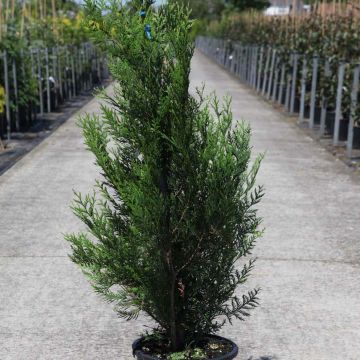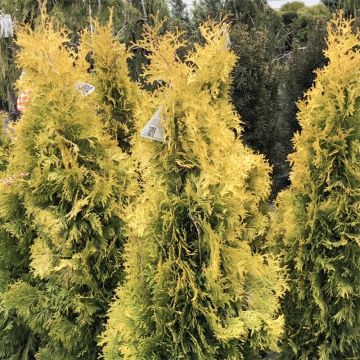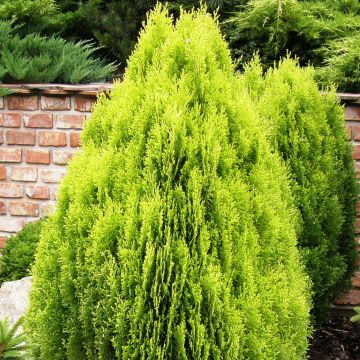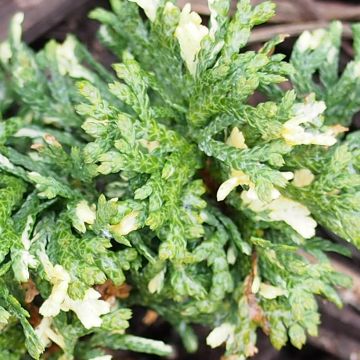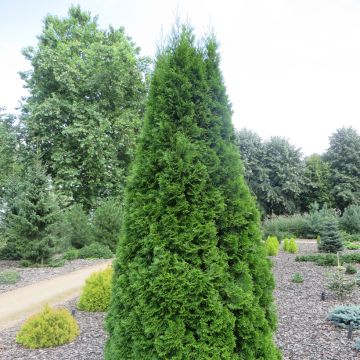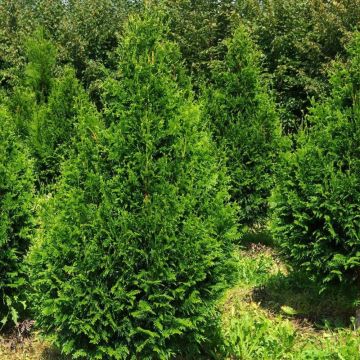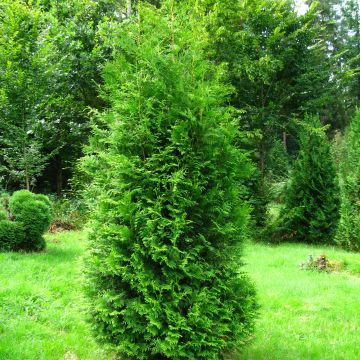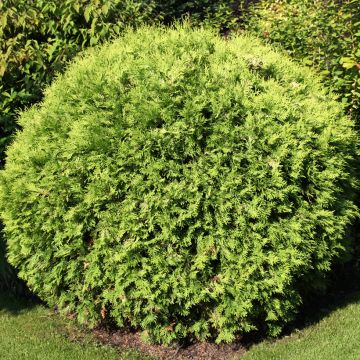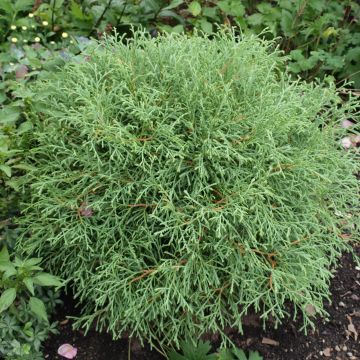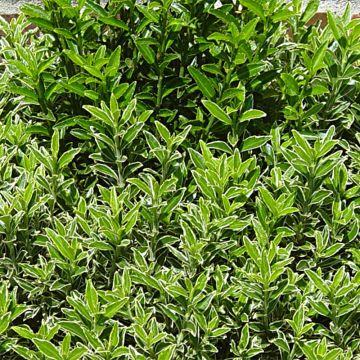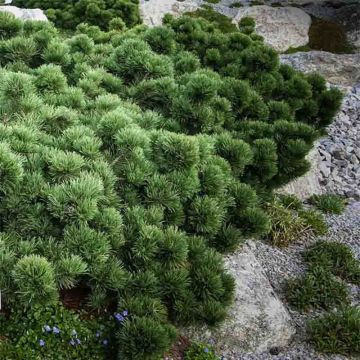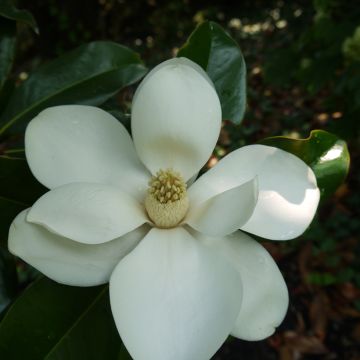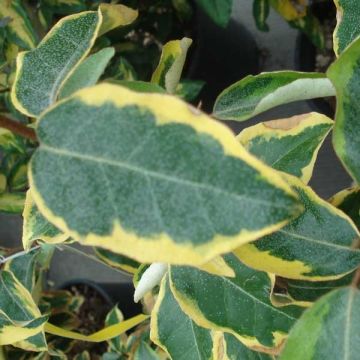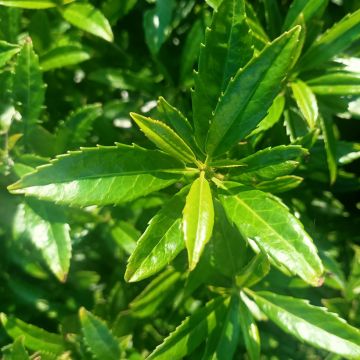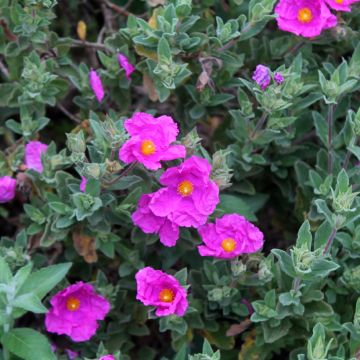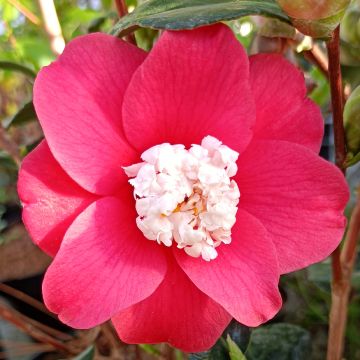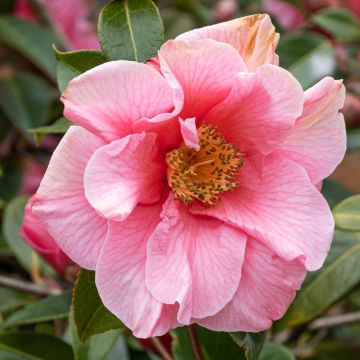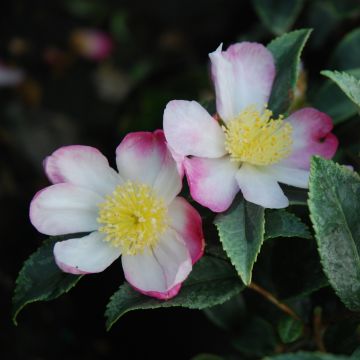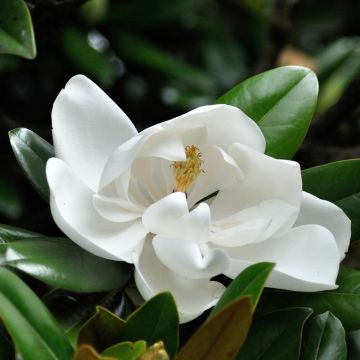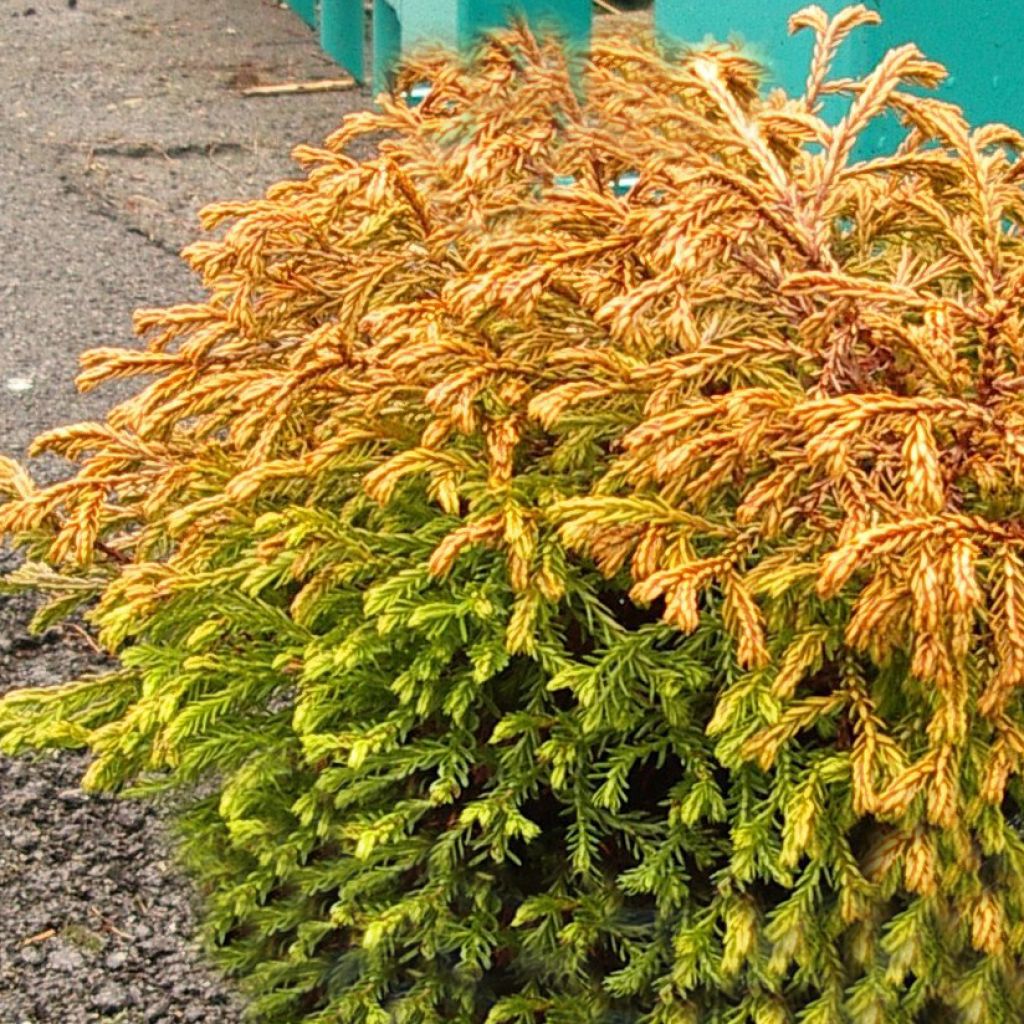

Thuja occidentalis Golden Tuffet - Canadian Arborvitae
Thuja occidentalis Golden Tuffet - Canadian Arborvitae
Thuja occidentalis Golden Tuffet
Eastern White Cedar, Northern White Cedar, American Arborvitae, Eastern Arborvitae
This item cannot be shipped to the selected country
Delivery charge from €5.90
Delivery charge from €5.90
Delivery charge from €5.90
More information
Schedule delivery date,
and select date in basket
This plant carries a 24 months recovery warranty
More information
We guarantee the quality of our plants for a full growing cycle, and will replace at our expense any plant that fails to recover under normal climatic and planting conditions.
From €5.90 for pickup delivery and €6.90 for home delivery
Express home delivery from €8.90.
From €5.90 for pickup delivery and €6.90 for home delivery
Express home delivery from €8.90.
From €5.90 for pickup delivery and €6.90 for home delivery
Express home delivery from €8.90.


Does this plant fit my garden?
Set up your Plantfit profile →
Description
Forming a spreading and compact cushion, Thuja occidentalis 'Golden Tuffet' wears its name beautifully. This small conifer is an excellent ground cover, with an attractive, aromatic foliage that is yellow in summer and turns orange to bronze in winter. Its flattened branchlets covered with scales appear curiously braided. Its slow growth and small size allow for various uses, in a small garden, rockery, as a standalone specimen, in a border with perennials or shrubs, or even in a large pot on the terrace. It is a very hardy conifer, not demanding in terms of soil type, and can tolerate well-drained soil, even poor and occasionally dry, and a sunny position.
Thuja occidentalis, also known as Northern White Cedar or American Arborvitae, is sometimes called Eastern White Cedar or Arborvitae. It is an evergreen conifer of the cypress family native to northeastern North America. It is distributed over a wide geographic range that perfectly reflects the plasticity of its living conditions, from swamps to cliffs, all hostile environments that discourage many other competing species. In nature, it reaches a height of 15 to 20m (49ft 2in to 65ft 7in), adopting a beautiful conical habit, and a trunk covered with a highly decorative, reddish-brown exfoliating bark. It is a very hardy species, very well adapted to temperate climates and poor, wet or occasionally dry soils. Its almost rot-resistant, lightweight, fragrant, and easily flammable wood lends itself to many uses. It has given rise to more than 300 cultivars that have been selected for their ornamental qualities.
The 'Golden Tuffet' cultivar, derived from this species, distinguishes itself by its very small size, its globose, cushion-like habit that is wider than it is tall, and its very elegant foliage, with changing colours. Its growth is slow, so it will reach a height of 50cm (19.7in) and a spread of 1m (3ft 4in) at the age of 10 years. Then its growth will slow down even further and tend to reach a height of 1m (3ft 4in) after many long years. This conifer reveals an aromatic foliage when crushed, consisting of flattened branchlets that appear braided and covered with scale-like leaves 3 to 5mm long. Overlapping each other, the diamond-shaped leaves give the branchlets a flat appearance. The foliage, which remains juvenile in this variety, is golden yellow in summer, then takes on a predominantly bronze-orange hue in winter.
The 'Golden Tuffet' Eastern White Cedar will find its place in a small garden, in a rockery, or planted as ground cover in a border, as it is a very adaptable plant that is not demanding in well-drained soil. It can also be installed in a beautiful container on the terrace or balcony. It goes well with large stones, the geometric lines of swimming pools or houses. It can be associated with complementary grasses or prostrate (Juniperus horizontalis 'Blue Chip'), globose (Picea abies 'Little Gem') dwarf conifers, or even with the indestructible Microbiota decussata whose autumnal colour matches. The true graphic qualities of conifers naturally impose themselves in the design of a contemporary garden, which prefers the aesthetics of shapes, silhouettes, and textures over the dance of blooms. These plants with their reassuring permanence durably structure a border, mark pathways, border the terrace, easily replacing the strong presence of trimmed boxwood or holly. The key is to play with volumes and colours.
Report an error about the product description
Thuja occidentalis Golden Tuffet - Canadian Arborvitae in pictures
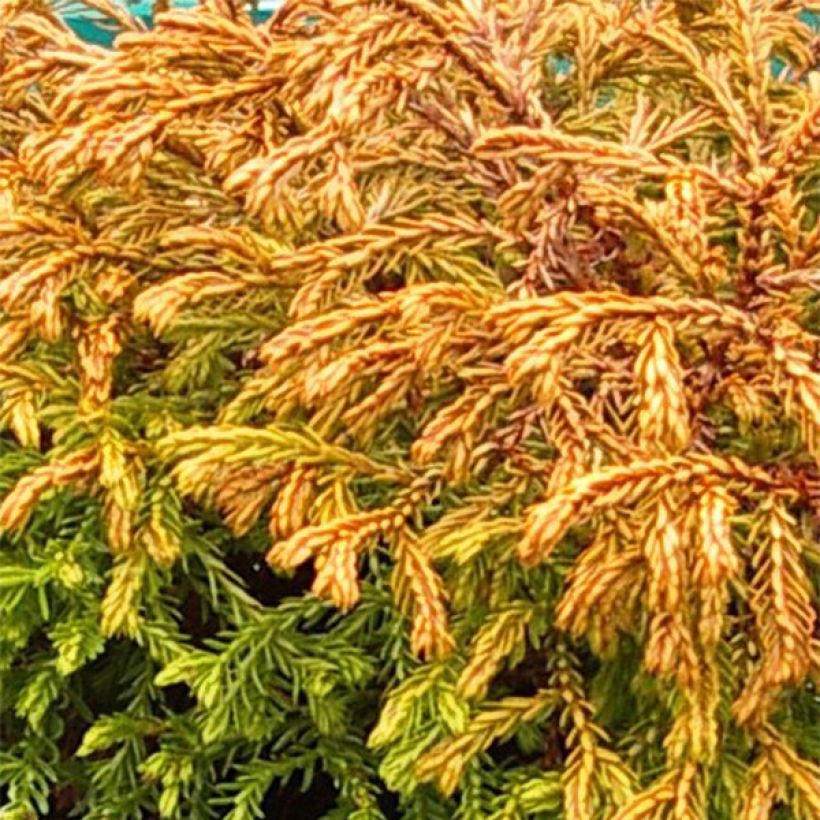

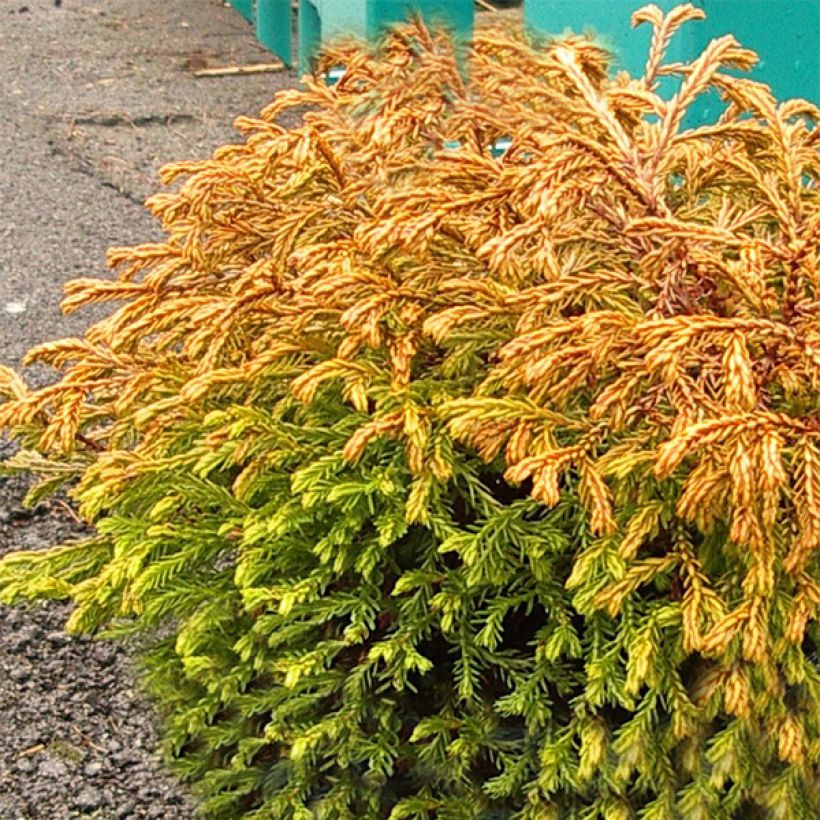

Plant habit
Foliage
Botanical data
Thuja
occidentalis
Golden Tuffet
Cupressaceae
Eastern White Cedar, Northern White Cedar, American Arborvitae, Eastern Arborvitae
Cultivar or hybrid
Other Thuya - Thuja
Planting and care
Thuja occidentalis 'Golden Tuffet' should be planted from September to November and from February to June in deep, ordinary, but loose and not too heavy soil, slightly acidic, neutral or alkaline, even dry in summer. It only fears extremely hot temperatures and prolonged drought, although it tolerates them once well established. However, it requires a sunny or semi-shaded exposure in warm climates to thrive. Soak the root balls well before planting. Optionally, add organic amendment to the planting hole and water generously in the first few years, and during prolonged drought. In very poor soil, you can apply a special conifer fertilizer every April and cultivate the soil in summer. This hardy conifer (up to -25°C (-13 °F) at least) does not require pruning.
Planting period
Intended location
Care
-
, onOrder confirmed
Reply from on Promesse de fleurs
Evergreen shrubs
Haven't found what you were looking for?
Hardiness is the lowest winter temperature a plant can endure without suffering serious damage or even dying. However, hardiness is affected by location (a sheltered area, such as a patio), protection (winter cover) and soil type (hardiness is improved by well-drained soil).

Photo Sharing Terms & Conditions
In order to encourage gardeners to interact and share their experiences, Promesse de fleurs offers various media enabling content to be uploaded onto its Site - in particular via the ‘Photo sharing’ module.
The User agrees to refrain from:
- Posting any content that is illegal, prejudicial, insulting, racist, inciteful to hatred, revisionist, contrary to public decency, that infringes on privacy or on the privacy rights of third parties, in particular the publicity rights of persons and goods, intellectual property rights, or the right to privacy.
- Submitting content on behalf of a third party;
- Impersonate the identity of a third party and/or publish any personal information about a third party;
In general, the User undertakes to refrain from any unethical behaviour.
All Content (in particular text, comments, files, images, photos, videos, creative works, etc.), which may be subject to property or intellectual property rights, image or other private rights, shall remain the property of the User, subject to the limited rights granted by the terms of the licence granted by Promesse de fleurs as stated below. Users are at liberty to publish or not to publish such Content on the Site, notably via the ‘Photo Sharing’ facility, and accept that this Content shall be made public and freely accessible, notably on the Internet.
Users further acknowledge, undertake to have ,and guarantee that they hold all necessary rights and permissions to publish such material on the Site, in particular with regard to the legislation in force pertaining to any privacy, property, intellectual property, image, or contractual rights, or rights of any other nature. By publishing such Content on the Site, Users acknowledge accepting full liability as publishers of the Content within the meaning of the law, and grant Promesse de fleurs, free of charge, an inclusive, worldwide licence for the said Content for the entire duration of its publication, including all reproduction, representation, up/downloading, displaying, performing, transmission, and storage rights.
Users also grant permission for their name to be linked to the Content and accept that this link may not always be made available.
By engaging in posting material, Users consent to their Content becoming automatically accessible on the Internet, in particular on other sites and/or blogs and/or web pages of the Promesse de fleurs site, including in particular social pages and the Promesse de fleurs catalogue.
Users may secure the removal of entrusted content free of charge by issuing a simple request via our contact form.
The flowering period indicated on our website applies to countries and regions located in USDA zone 8 (France, the United Kingdom, Ireland, the Netherlands, etc.)
It will vary according to where you live:
- In zones 9 to 10 (Italy, Spain, Greece, etc.), flowering will occur about 2 to 4 weeks earlier.
- In zones 6 to 7 (Germany, Poland, Slovenia, and lower mountainous regions), flowering will be delayed by 2 to 3 weeks.
- In zone 5 (Central Europe, Scandinavia), blooming will be delayed by 3 to 5 weeks.
In temperate climates, pruning of spring-flowering shrubs (forsythia, spireas, etc.) should be done just after flowering.
Pruning of summer-flowering shrubs (Indian Lilac, Perovskia, etc.) can be done in winter or spring.
In cold regions as well as with frost-sensitive plants, avoid pruning too early when severe frosts may still occur.
The planting period indicated on our website applies to countries and regions located in USDA zone 8 (France, United Kingdom, Ireland, Netherlands).
It will vary according to where you live:
- In Mediterranean zones (Marseille, Madrid, Milan, etc.), autumn and winter are the best planting periods.
- In continental zones (Strasbourg, Munich, Vienna, etc.), delay planting by 2 to 3 weeks in spring and bring it forward by 2 to 4 weeks in autumn.
- In mountainous regions (the Alps, Pyrenees, Carpathians, etc.), it is best to plant in late spring (May-June) or late summer (August-September).
The harvesting period indicated on our website applies to countries and regions in USDA zone 8 (France, England, Ireland, the Netherlands).
In colder areas (Scandinavia, Poland, Austria...) fruit and vegetable harvests are likely to be delayed by 3-4 weeks.
In warmer areas (Italy, Spain, Greece, etc.), harvesting will probably take place earlier, depending on weather conditions.
The sowing periods indicated on our website apply to countries and regions within USDA Zone 8 (France, UK, Ireland, Netherlands).
In colder areas (Scandinavia, Poland, Austria...), delay any outdoor sowing by 3-4 weeks, or sow under glass.
In warmer climes (Italy, Spain, Greece, etc.), bring outdoor sowing forward by a few weeks.

































